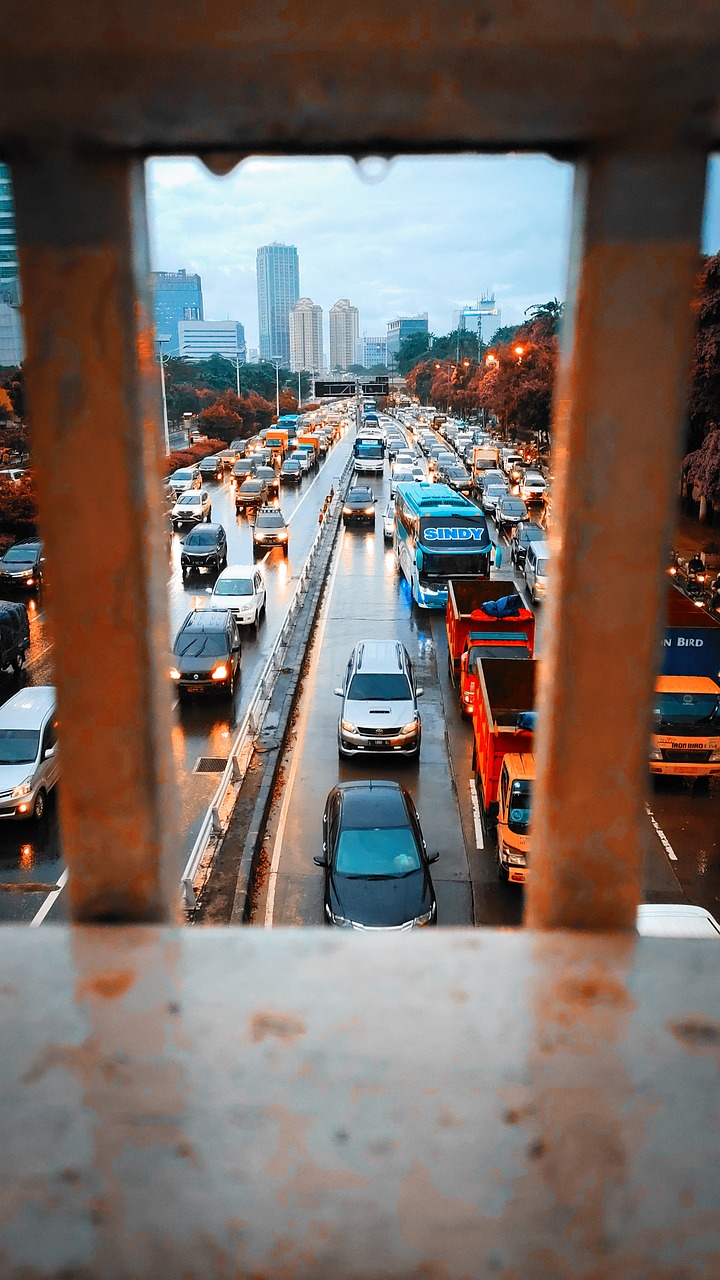Transport Infrastructure
Some believe that traffic problems in cities can best be resolved by investing in urban infrastructure while others feel there are superior solutions.
Discuss both sides and give your own opinion.
Many contend that traffic-related issues in urban areas can be optimally remedied through investment in the development of cities’ infrastructure while others believe there are more feasible measures. In my opinion, though viable to a certain degree, countermeasures such as those geared towards limiting private vehicles are short-sighted and impractical, which justifies public expenditure on the provision to upgrade urban infrastructure.
Detractors of allocations to public infrastructure rightly argue the efficacy of approaches such as discouraging private vehicles. The last several decades have witnessed the widespread proliferation of cars as a result of burgeoning middle classes in most cities around the world, and this has greatly contributed to traffic congestion. To counter this, the local authorities have introduced congestion charges in cities such as London and New York, and may even, in the foreseeable future, administer more drastic measures such as a complete ban on private automobiles in many parts of the world. However, these measures, though well-intentioned, will likely produce a strong backlash as they violate a legitimate individual right to car use, and it is also hard to argue against the convenience of cars in comparison to other modes of transport in carrying large numbers of passengers and commodities.
Moreover, improvements in transport infrastructure represent a more well-rounded solution. This measure, provided it is executed correctly, will likely benefit all road users. For motorists, the construction of new highways and motorways provides truck and car drivers with extra lanes, mitigating the potential build-ups of traffic on existing roads and alleviating concerns of possible collisions with other smaller means of transport such as bicycles. With regards to bicycle users, designated bike lanes have been implemented in many cities such as Ho Chi Minh City, Vietnam, which, according to the country’s road statistics, has reduced accidents in the past several decades. Similarly, increased numbers of pedestrian footpaths and footbridges have been associated with decreased traffic congestion and improved commuting experiences for pedestrians in cities around the globe.
In conclusion, despite the ostensible benefits of remedies aimed at limiting cars in urban areas, developments of transport infrastructure are by far the more effective solution due to the positive impacts on all commuters. Governments should, therefore, prioritize expenditure on the provisions and upgrading of transport infrastructure for the betterment of the general citizenry.
Essay Breakdown
Structure
Introduction
[1] Many contend that traffic-related issues in urban areas can be optimally remedied through investment in the development of cities’ infrastructure while others believe there are more feasible measures. [2] In my opinion, [2.1] though viable to a certain degree, countermeasures such as those geared towards limiting private vehicles are short-sighted and impractical, which justifies [2.2] public expenditure on the provision to upgrade urban infrastructure.
1. Paraphrase the topic – measures to tackle traffic-related issues
2. Write a clear opinion to state personal viewpoints
2.1 Viewpoint about some feasible yet short-sighted and impractical solutions
2.2 Preferred point of view – investment in urban infrastructure
Body
Paragraph 1
[1] Detractors of allocations to public infrastructure rightly argue the efficacy of approaches such as discouraging private vehicles. [2] The last several decades have witnessed the widespread proliferation of cars as a result of burgeoning middle classes in most cities around the world, and this has greatly contributed to traffic congestion. [3] To counter this, the local authorities have introduced congestion charges in cities such as London and New York, and may even, in the foreseeable future, administer more drastic measures such as a complete ban on private automobiles in many parts of the world. [4] However, these measures, though well-intentioned, will likely produce a strong backlash as they violate a legitimate individual right to car use, and it is also hard to argue against the convenience of cars in comparison to other modes of transport in carrying large numbers of passengers and commodities.
1. A topic sentence showing the main idea – the efficacy of a number of feasible approaches
2. Introduce a supporting idea by mentioning the widespread proliferation of cars
3. Explain by giving an example involving the introduction of congestion charges in a number of cities
4. [Counter-argument] a counterpoint to negate the main idea of this paragraph and to emphasize the preference towards the viewpoint discussed in the next paragraph
Paragraph 2
[1] Moreover, improvements in transport infrastructure represent a more well-rounded solution. [2] This measure, provided it is executed correctly, will likely benefit all road users. [3] For motorists, the construction of new highways and motorways provides truck and car drivers with extra lanes, mitigating the potential build-ups of traffic on existing roads and alleviating concerns of possible collisions with other smaller means of transport such as bicycles. [4] With regards to bicycle users, designated bike lanes have been implemented in many cities such as Ho Chi Minh City, Vietnam, which, according to the country’s road statistics, has reduced accidents in the past several decades. [5] Similarly, increased numbers of pedestrian footpaths and footbridges have been associated with decreased traffic congestion and improved commuting experiences for pedestrians in cities around the globe.
1. A topic sentence showing the main idea – a well-rounded solution
2. Introduce a supporting idea (benefits of the solution if properly executed)
3. Give an explanation related to motorists to support the aforementioned idea
4. Change the scope to another group of users (bicycle) to strengthen the idea
5. Conclude by switching the scope to pedestrians
Conclusion
[1] In conclusion, despite the ostensible benefits of remedies aimed at limiting cars in urban areas, developments of transport infrastructure are by far the more effective solution due to the positive impacts on all commuters. [2] Governments should, therefore, prioritize expenditure on the provisions and upgrading of transport infrastructure for the betterment of the general citizenry.
1. Restate my opinion
2. Extend the viewpoint by stating a final thought
Vocabulary
Many contend that traffic-related issues in urban areas can be optimally remedied through investment in the development of cities’ infrastructure while others believe there are more feasible measures. In my opinion, though viable to a certain degree, countermeasures such as those geared towards limiting private vehicles are short-sighted and impractical, which justifies public expenditure on the provision to upgrade urban infrastructure.
Detractors of allocations to public infrastructure rightly argue the efficacy of approaches such as discouraging private vehicles. The last several decades have witnessed the widespread proliferation of cars as a result of burgeoning middle classes in most cities around the world, and this has greatly contributed to traffic congestion. To counter this, the local authorities have introduced congestion charges in cities such as London and New York, and may even, in the foreseeable future, administer more drastic measures such as a complete ban on private automobiles in many parts of the world. However, these measures, though well-intentioned, will likely produce a strong backlash as they violate a legitimate individual right to car use, and it is also hard to argue against the convenience of cars in comparison to other modes of transport in carrying large numbers of passengers and commodities.
Moreover, improvements in transport infrastructure represent a more well-rounded solution. This measure, provided it is executed correctly, will likely benefit all road users. For motorists, the construction of new highways and motorways provides truck and car drivers with extra lanes, mitigating the potential build-ups of traffic on existing roads and alleviating concerns of possible collisions with other smaller means of transport such as bicycles. With regards to bicycle users, designated bike lanes have been implemented in many cities such as Ho Chi Minh City, Vietnam, which, according to the country’s road statistics, has reduced accidents in the past several decades. Similarly, increased numbers of pedestrian footpaths and footbridges have been associated with decreased traffic congestion and improved commuting experiences for pedestrians in cities around the globe.
In conclusion, despite the ostensible benefits of remedies aimed at limiting cars in urban areas, developments of transport infrastructure are by far the more effective solution due to the positive impacts on all commuters. Governments should, therefore, prioritize expenditure on the provisions and upgrading of transport infrastructure for the betterment of the general citizenry.
- remedied through (v): countered through/ solved by/ resolved through
- feasible measures (adj): viable solutions
- gear towards (phrasal verb): aimed at
- expenditure (n): the act of spending or using money
- efficacy (n): the ability of something to produce the results that are wanted
- the widespread proliferation (n): the ubiquity
- burgeon (v): to begin to grow or develop rapidly
- traffic congestion (n): traffic jam
- in the foreseeable future (adj): in the near future
- administer (v): implement/ impose/ enact
- produce a strong backlash (n): spark an outcry
- legitimate (adj): legal/ accepted: for which there is a fair and acceptable reason
- commodity (n): a product or a raw material that can be bought and sold
- build-ups of traffic (n): the concentration of vehicles
- footpath (n): a path that is made for people to walk along
- footbridge (n): a narrow bridge used only by people who are walking
- associated with (adj): if one thing is associated with another, the two things are connected because they happen together or one thing causes the other
Reading
Further reading about this topic can be found here:
https://onlinemasters.ohio.edu/blog/traffic-congestion-problems-and-solutions/
Listening
Further listening about this topic can be found here:


